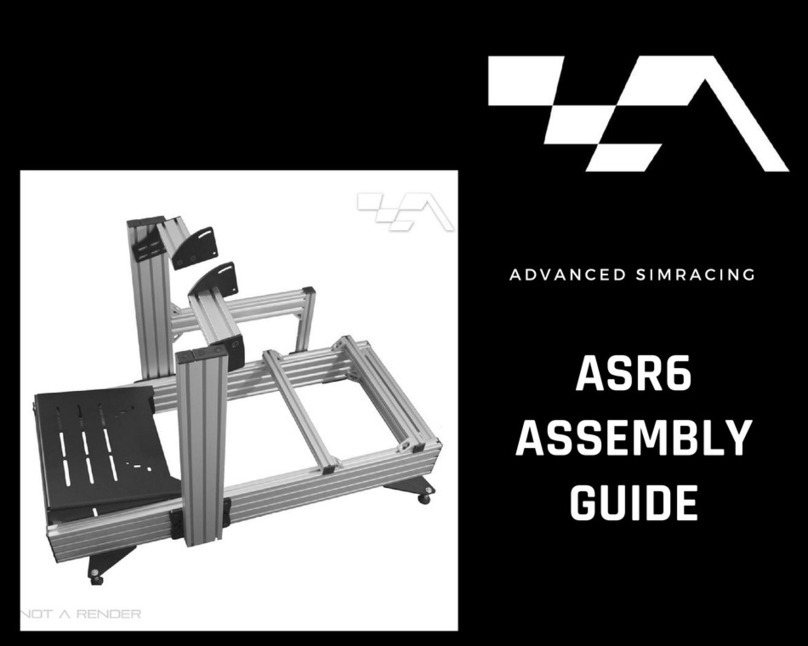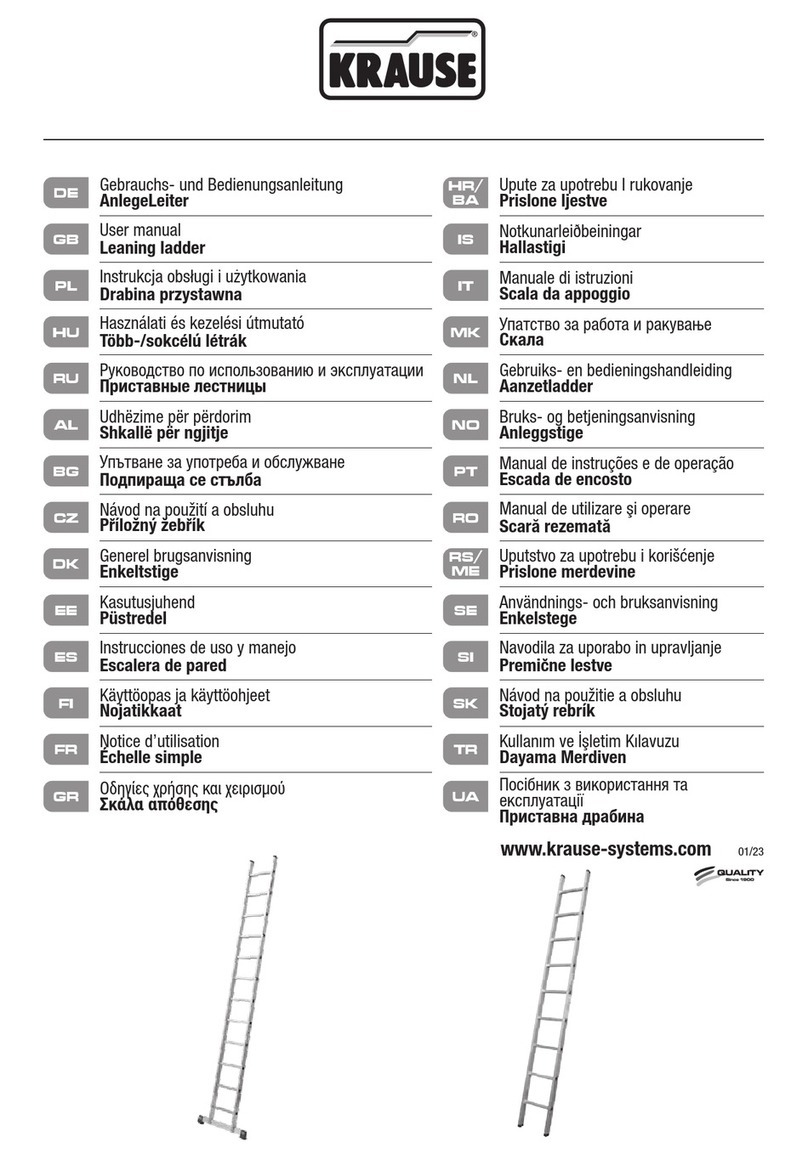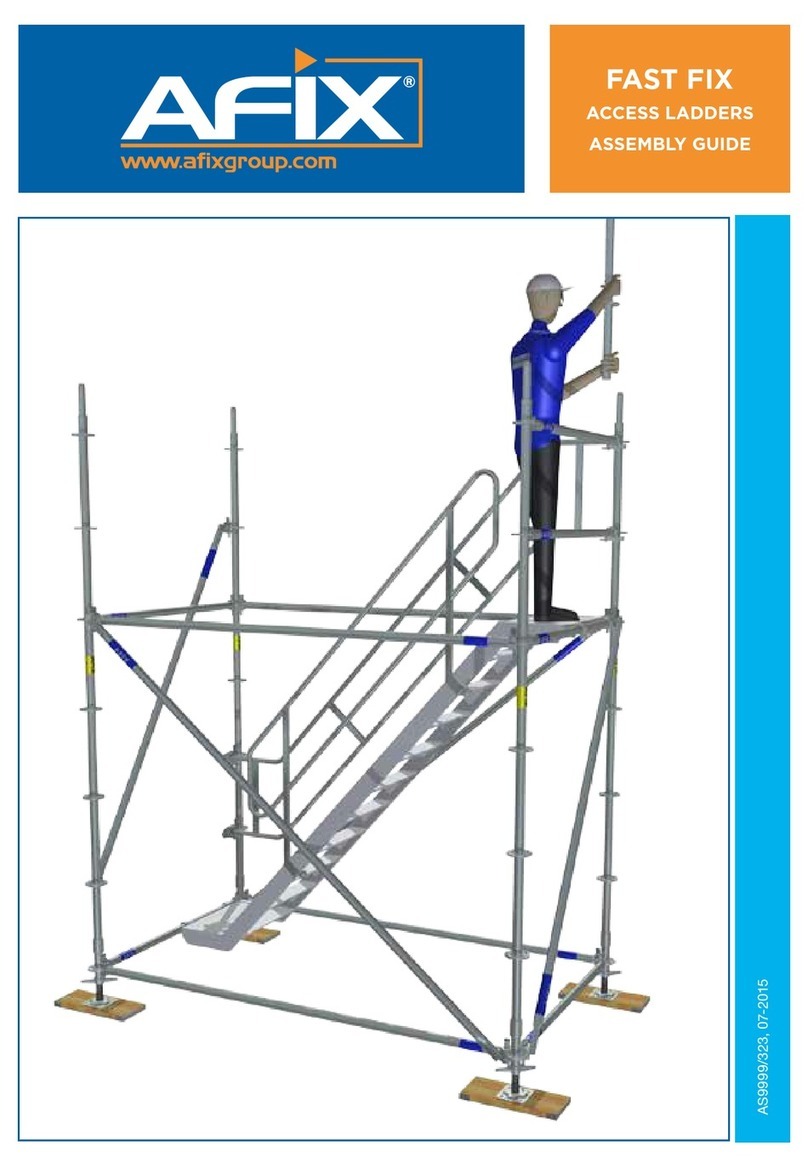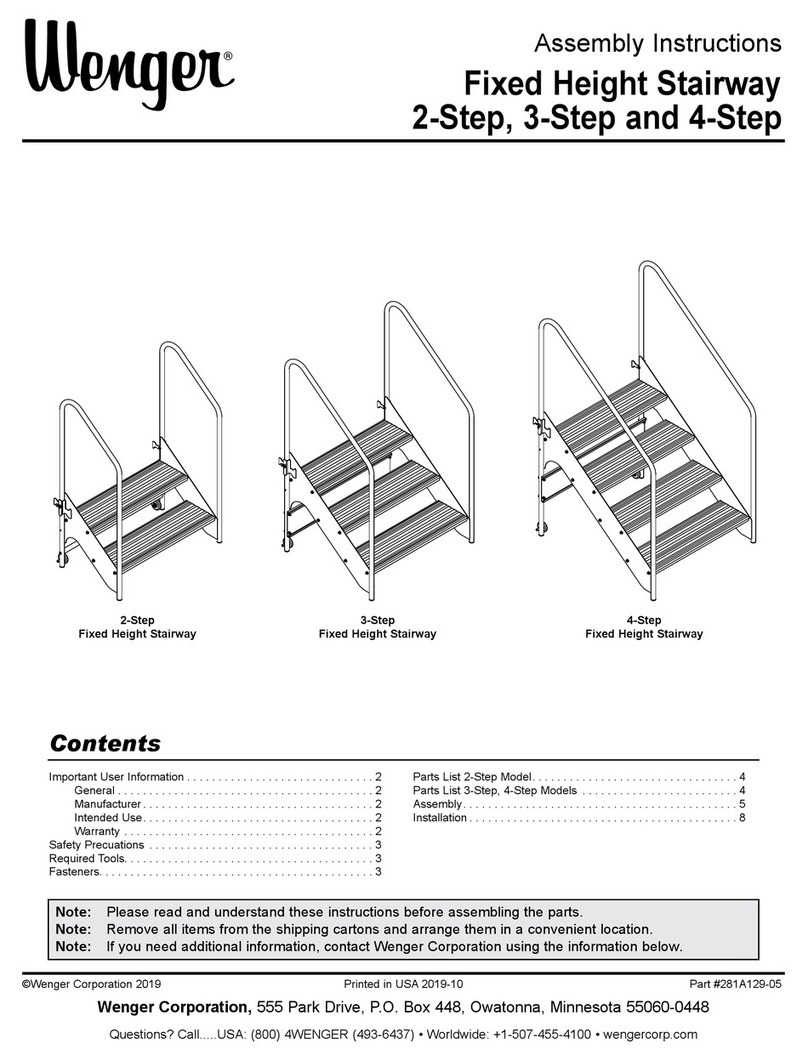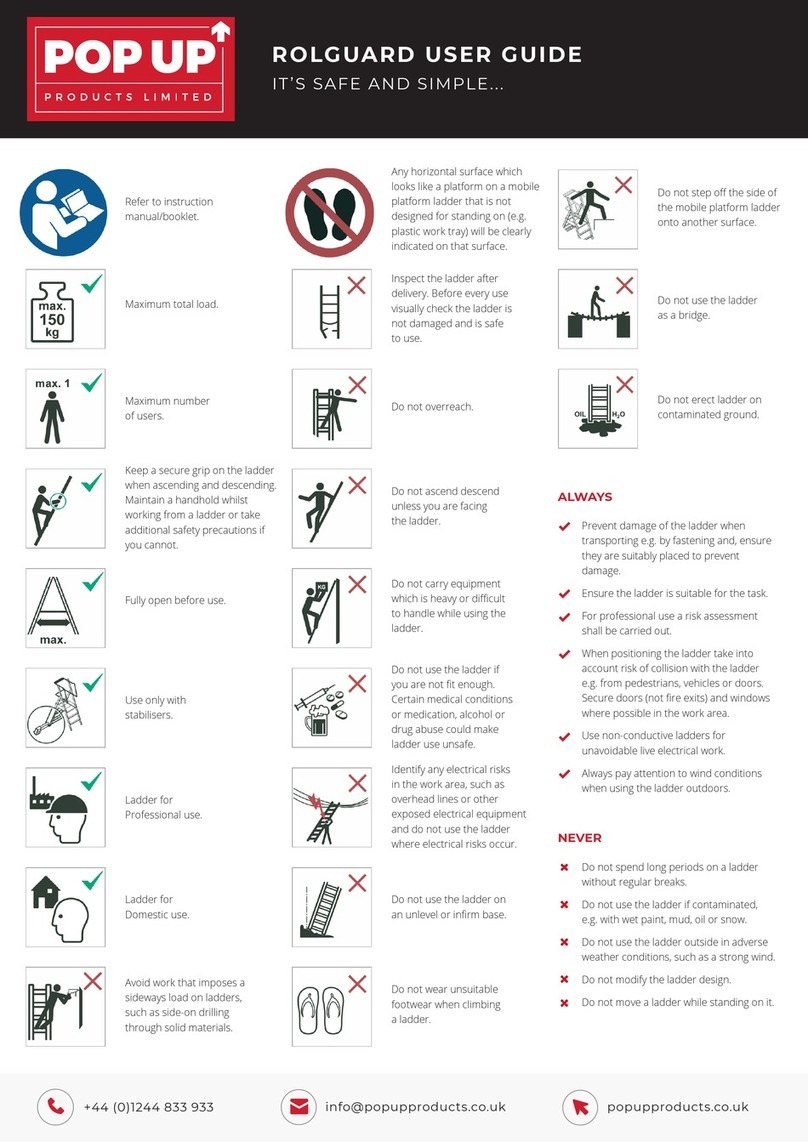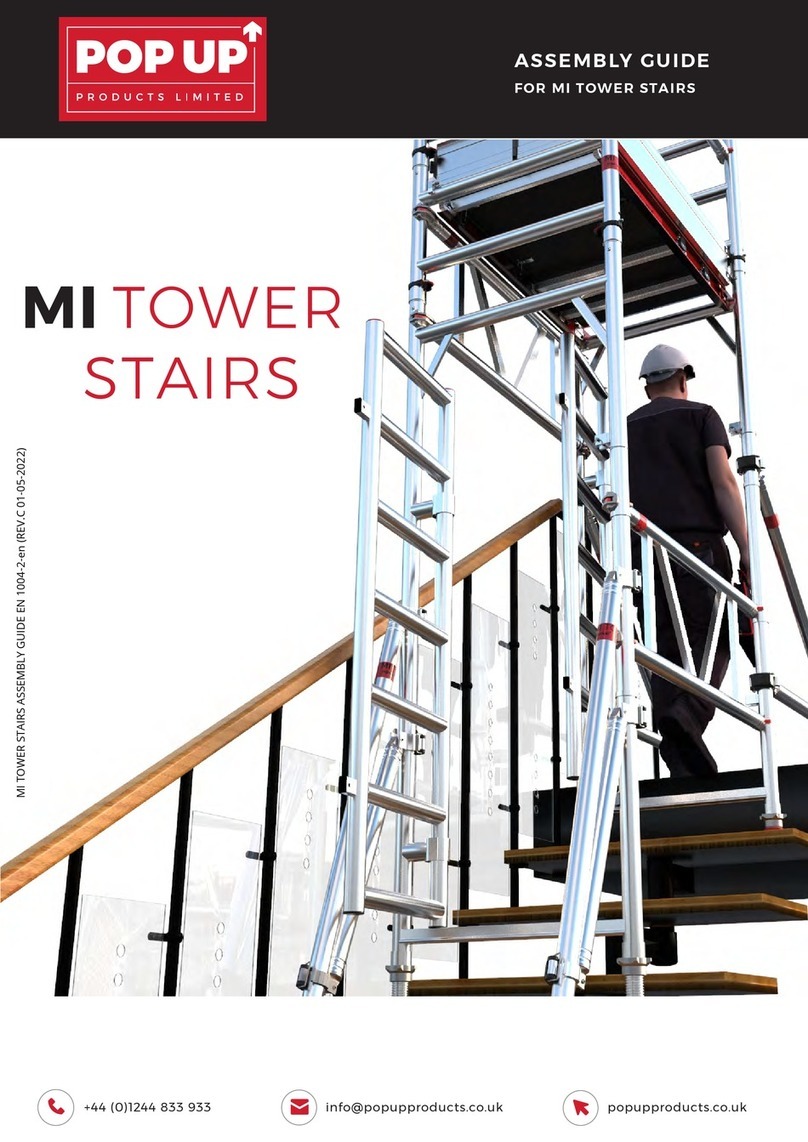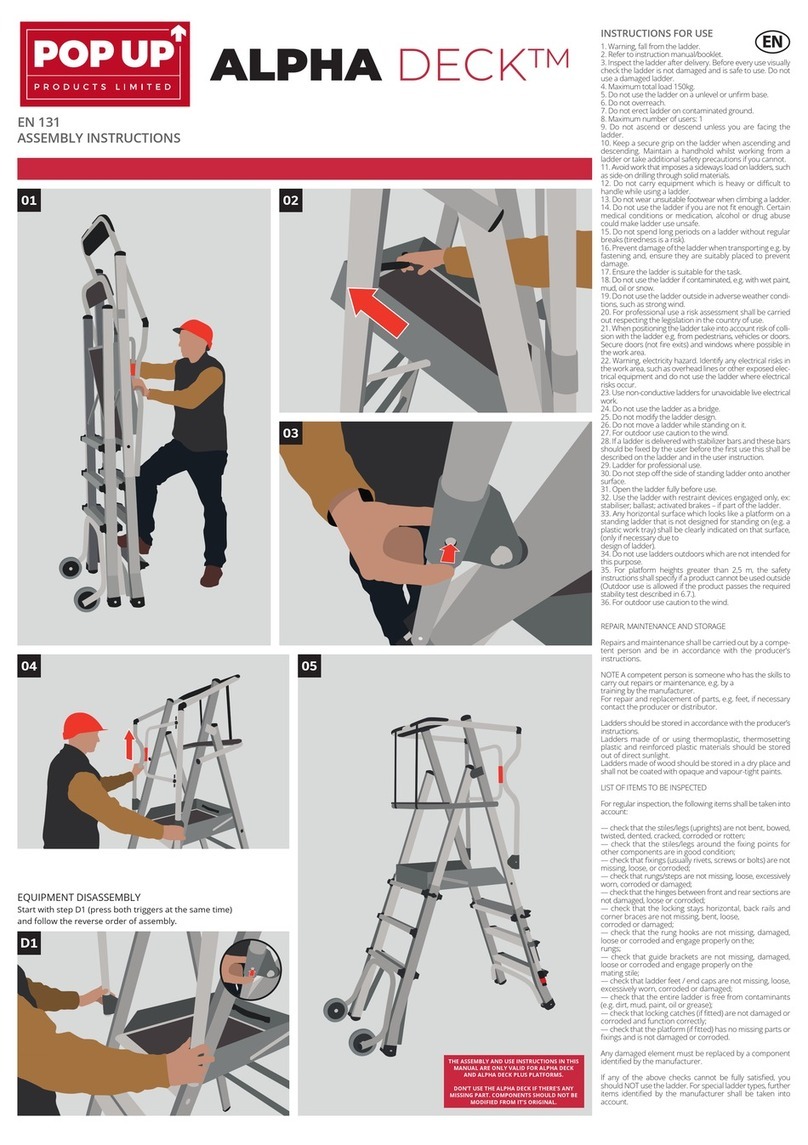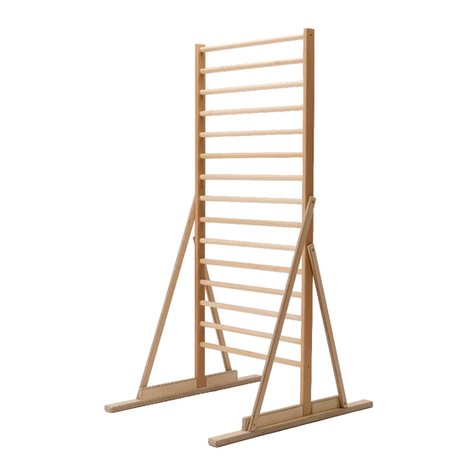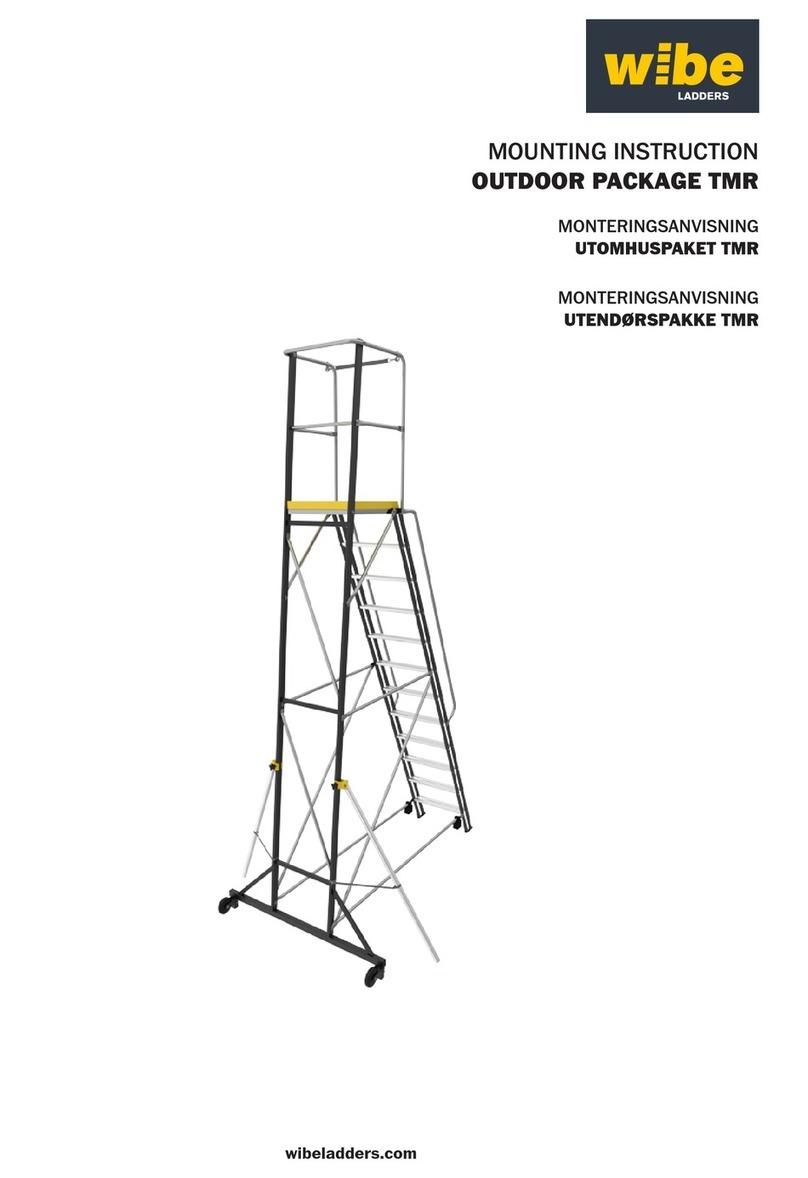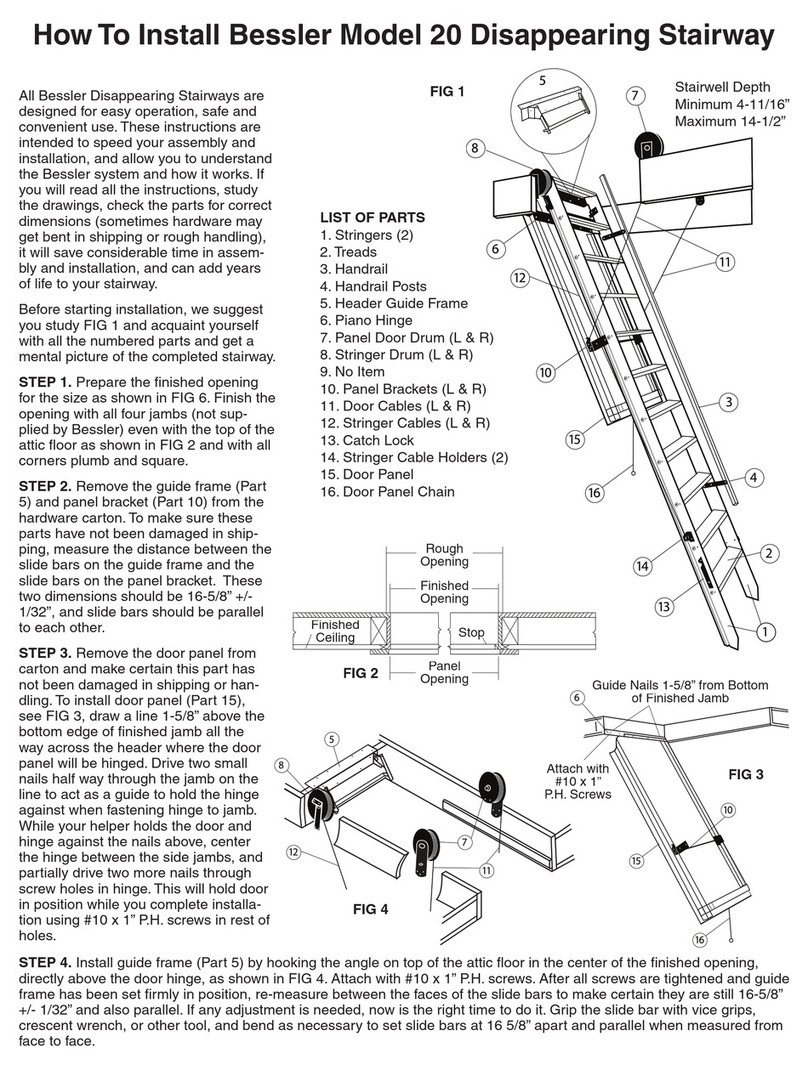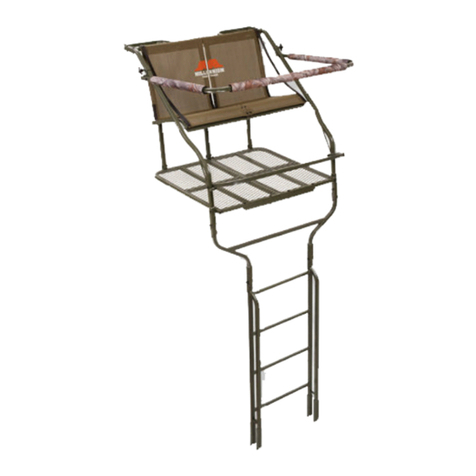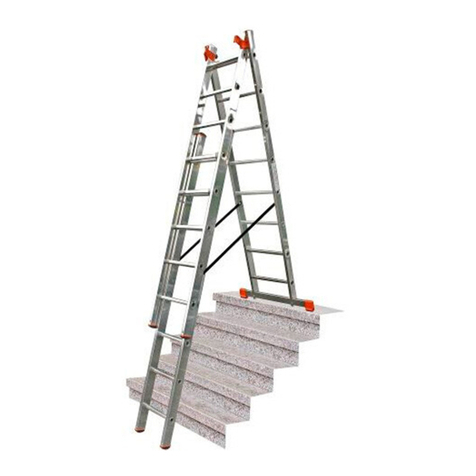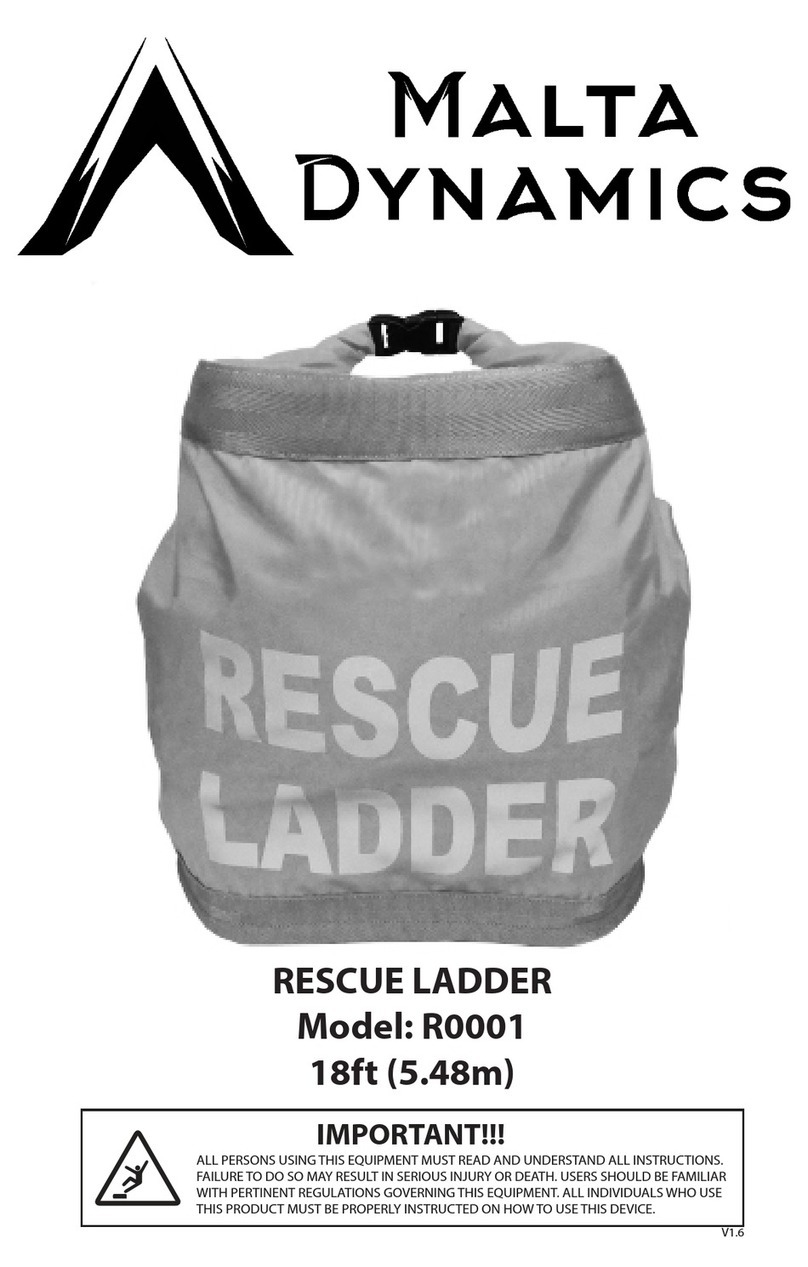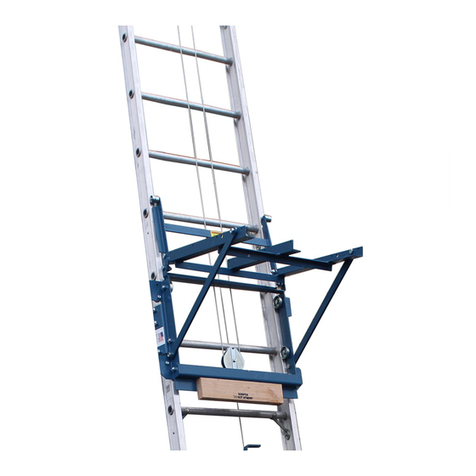
INSTRUCTIONS FOR LADDERS
AND STEPLADDERS
Congratulations on your purchase of an Altrex
stepladder or ladder. The well-considered details ensure
that an Altrex stepladder or ladder is easy to use. Some
instructions relate specically to either a stepladder or
ladder. Should that be the case, this is clearly stated.
Before using the stepladder or ladder, read these
instructions carefully! Save these instructions in
case they are needed for future reference. Also
study the illustrations/pictograms that are shown on
the product itself.
THE SAFE USE OF A STEPLADDER
OR LADDER
• Remain alert. Concentrate when climbing a stepladder
or ladder and never do so under the inuence of
alcohol, medication or substances that may aect your
ability to react.
• Should you transport the stepladder or ladder, ensure
that this is folded up and make sure that the stepladder
or ladder is properly supported and xed in place.
• Upon receipt of the stepladder or ladder, check the
condition and operation of all parts. Make sure that all
parts (including the feet and end caps) are present
• Every time before use, inspect the stepladder or ladder
for any defects, such as deformation or wear.
• Stepladders and ladders that are used in a professional
capacity must be inspected periodically by an expert.
• Every time before using the ladder or stepladder, make
sure that it is suitable for its intended use. Only use the
stepladder or ladder for the purpose for which it has
been made. Do not use the stepladder or ladder as
scaolding or a gantry, etc. Only use a stepladder when
it is free-standing.
• Never climb a stepladder that is placed against a wall.
• Never use a damaged or broken stepladder or ladder.
Temporary repairs are not permitted. Make sure that
any damage to a stepladder or ladder is repaired as
soon as possible by a professional in this eld, in any
case before it is used again.
BEFORE USE
• As far as possible, ensure that the stepladder or ladder
is free from contamination by substances such as wet
paint, mud, snow and oil.
• Prior to use, carry out a risk analysis should you be
obliged/required to do so by local or national legislation
and regulations.
• Maintain a stepladder or ladder in accordance with the
instructions.
• Dispose of stepladders or ladders if they are broken,
worn-out or irreparable.
• A ladder has to be positioned in such a way that
the distance from the foot of the ladder to the wall is
approximately equal to a quarter of the operational
length of the ladder. The set-up angle will then be circa
75° (the standing surfaces of the rungs will thus be
horizontal at this angle, gure 1).
• Before use, check that the stepladder/combination
ladder has been fully folded out.
- In a stepladder, this is ensured by clicking the
platform into place and/or by folding out a push-
resistant locking stay (between the front and rear
sections of the stepladder).
- In a combination ladder, this is ensured by
allowing the ladder to click into place properly in the
combination hook (gure 2). The ladder must always
be folded up before being moved. Do not move the
ladder when in combination position, this can result in
the locking pin shooting out of the combination hook
- In addition, the metal locking stay can be fastened
(if present, gure 3). If there are belts between the
ladder sections, these should be taut. The design of
the locking stay will vary between models.
• Always stand the stepladder or ladder on a rm, stable,
horizontal surface, which is not slippery.
This will ensure that the feet of the stepladder or ladder
cannot sink into the ground and/or slip away. Therefore,
do not place the stepladder or ladder on tables, boxes,
crates or other unstable surfaces, such as muddy soil or
loose sand.
POSITIONING AND/OR ERECTING
A STEPLADDER OR LADDER

